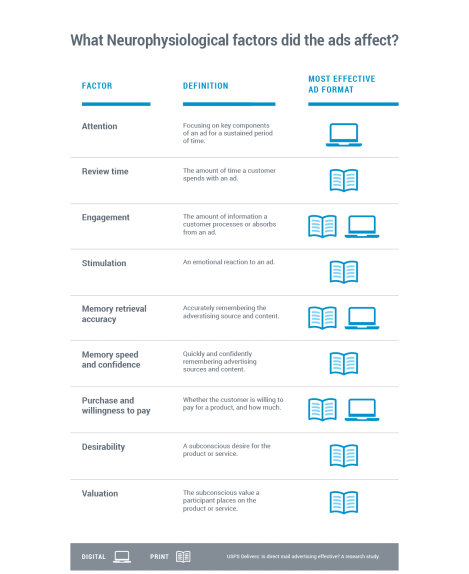The digital marketing revolution has brought us the most thoughtful, cost-efficient, and intuitive means of communicating with prospects and building relationships. When your entire universe embraces electronic devices, you know where people are. You can interpret their actions. You can tell with metrics what is working, and what isn’t.
So, it’s a reasonable question: If your audience is online, should you as a marketer even have to think “off the screen”?
If your company wanted to put together 100 percent digital means of communicating and marketing, you certainly could be effective. But science and attitudinal surveys suggest that you’re not going to be the most effective.
Let’s address four important dynamics when considering the use of tactile products within your arsenal of marketing materials.
1. Psychology
Few people will show up at a birthday party with a gift, yet simply email the greeting card. Call it a social construct, and even a dated one—but there’s a scientific reason that having a card-in-hand elicits a more joyous response from the recipient.

In a 2015 study that became a modern template for understanding print media’s impact on brain activity, Temple University researchers explain that holding and looking at a piece of paper stimulates the ventral striatum area of the brain more so than looking at the same image on a screen. In the study of successful marketing campaigns, the ventral striatum is accepted as a leading indicator of desire and valuation, the Temple scientists say.
In short: Having a printed item in your hand elicits a stronger emotional response. The science says it’s valued more, and desired more.
2. Preferences
Of course, 3D brain imaging via an MRI machine isn’t the only way to tell how people react to a printed piece versus a digital image. You can simply ask.
There are plenty of attitudinal surveys that suggest the printed word has an impactful present and future.
- 72 percent of respondents across all generations say they prefer to connect with brands not just digitally but across multiple channels. (Autopilot)
- 73 percent of U.S. residents enjoy getting direct mail from brands. (Epsilon)
- Young adults prefer printed products because it’s easier for them to read something on paper than on a screen. (TNS Research)
- Millennials and younger generations say they place more trust in printed product because it feels more “real.” (TNS Research)
- Americans prefer reading books in print as opposed to digital. (Pew Research)
These surveys have a common thread: even among those who have the power to live in the all-digital world, there’s a desire to have a tactile product because it’s easier and it feels better.
3. Memory
A third consideration also is rooted in science: Printed materials have proven to be more memorable than their digital counterparts.
In a 2019 study, the United States Postal Service Office of Inspector General concluded that “physical ads were found to result in stronger memories, and this was found to be true across all age groups.” Test subjects were shown digital images and post cards and tested on their recall of the advertising messages one week later.

The printed pieces consistently outperformed the on-screen content in regard to evoking strong memories. Specifically, the USPS study concludes that printed materials lead to “quickly and confidently remembering advertising sources and content.”
Similar studies abound in academia, where recall is shown to be consistently stronger among those who read paper books in comparison to e-readers. As a marketer, few outcomes are as desirable as having your audience confidently recall your brand messaging.
4. The right mix
Certainly, based on science and preferences, printed materials have a place in eliciting ROI. The trick for the marketer, then, is to figure out exactly what that place is based on budget, goals, and the practicality of placing printed materials into the hands of your prospects.
Since we already live in a digital environment, a good starting point for incorporating omnichannel marketing might be to backward-integrate print pieces.
It’s right to think, first, about your company’s website, its digital presentation materials, its social media presence, and its videos. But taking a step back to look at the “whole package” is a worthwhile exercise.
Does your team have cards, brochures, booklets, or other “leave behinds”? Can you envision how putting a presentation folder in your prospect’s hands can portray more value, and hence elicit a stronger or faster response? Can you see, in light of the data, how a few touchpoints via direct mail can strengthen a bond with your clients?
These are the types of questions that can make your company truly stand out with the air of thoughtfulness that makes omnichannel marketing so effective.
